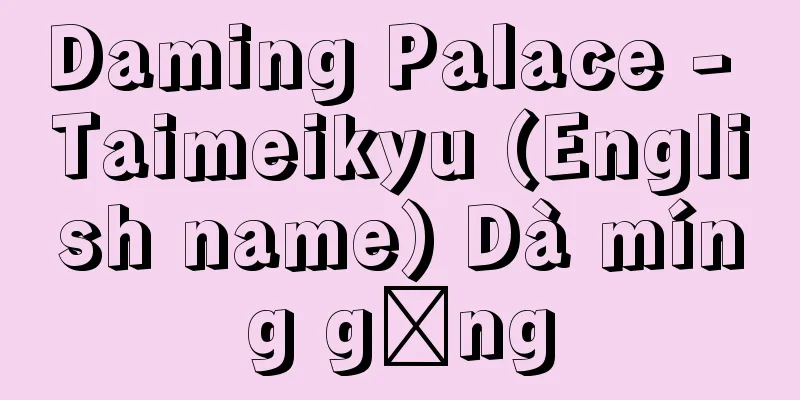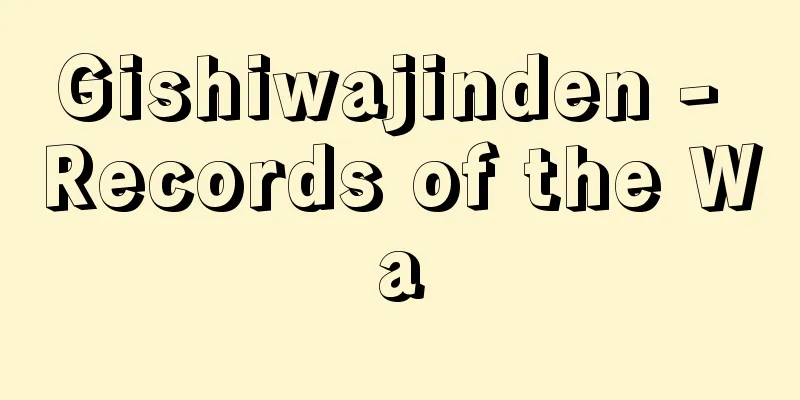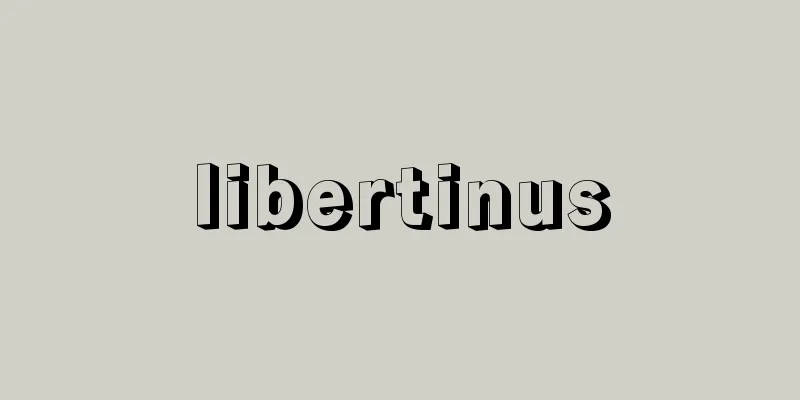Yarn - Keito

|
A general term for yarn made from sheep's hair, as well as yarn spun from fine animal hair such as goat hair, camel hair, angora rabbit hair, llama hair, alpaca hair, mohair, and cow hair. When these are made into yarn, the name of the raw material is given, and they are called wool yarn, camel yarn, etc. Depending on the use, they can be broadly classified into weaving yarn, stockinette yarn, hand-knitted yarn, and rug yarn. Depending on the spinning method, wool yarn can be broadly classified into worsted yarn and woolen yarn. [Kadoyama Yukihiro] Worsted YarnIt is made of high-quality wool yarn that is relatively long and is about 1 inch (2.54 cm) or more. The raw yarn used for fabrics such as serge, polka dot, and gabardine is mainly worsted yarn, but stockinette yarn and hand-knitted yarn are also included. In worsted spinning, the raw wool is first opened into bales and the yarn for worsted yarn is (1) selected based on its quality, (2) washed with soap and alkali to remove impurities such as oil and feces, (3) put into a carding machine to stretch the wool and make it parallel, and then the arrangement of the wool is adjusted with a comber. This is called the top, and the yarn is then completed through the spinning process of (4) pre-spinning and (5) fine spinning. [Kadoyama Yukihiro] Woolen YarnThis yarn is made by mixing and spinning relatively short raw wool, defective raw wool from the worsted spinning process, or recycled wool recovered from woolen fabrics or woolen knit rags. The fibers are not parallel, and the surface of the yarn is fuzzy. As a result, the yarn is weaker than worsted yarn and has a poorer appearance, but it has good fulling properties and is suitable as raw yarn for textiles that are finished by fulling and raising so that the weave is not visible. Most heavy fabrics such as melton, flannel, rags, and blankets can be considered to be made from woolen yarn. There are only three processes: raw material preparation, carding (aligning the fibers), and spinning. As the raw material for woolen yarn is mostly recycled wool, the raw wool is dyed as necessary after removing dust, and then (1) the raw material is prepared, and (2) the fibers are converged by carding, and coarse wool is quickly produced. To (3) spin this, a mule spinning machine is often used to stretch and twist the yarn appropriately to produce woolen yarn. Depending on the dyeing method, wool yarn is called raw yarn when it is undyed and colored yarn when it is dyed. Wool yarn is classified according to the stage of the spinning process at which it is dyed; there is wool dyeing, where the wool is dyed in its raw form (raw wool dyeing), top dyeing, where the intermediate product made from dyed wool is dyed, and yarn dyeing, where the yarn is dyed. A constant weight system is used to express the thickness of wool, and there are two systems: the English system and the metric system. In the English system, the base units are different for woollen and worsted yarns. For woollen yarn, the count number is a number indicating how many times the yarn weighs 1 pound (453.6 grams) and is 256 yards (about 234 meters) long. For worsted yarn, the count number is a number indicating how many times the yarn weighs 1 pound and is 560 yards (about 512 meters) long. In the metric system, there is no difference between worsted and woollen yarns, and a yarn that weighs 1 kilogram and is 1 kilometer long is called count 1. In Japan, the English system was originally used, but it is now the metric system. The conversion method between the English and metric systems is as follows: (Worsted yarn) Metric number 1 = British number 0.885 (Woolen yarn) Metric number 1 = British number 1.938 Also, when we normally talk about yarn, it mainly refers to machine-knitted yarn and hand-knitted yarn, but these need to be particularly loosely twisted and elastic, and three types are used depending on the application: medium, medium-fine, and extra-fine, with special types being extra-fine, extra-fine, and extra-fine. The raw material used for hand-knitted yarn is relatively thick Merino wool, as well as hybrid wool, and 2 to 4 strands are twisted together. Medium-fine wool is generally used, but different types are used depending on the application. [Kadoyama Yukihiro] [Reference] |Source: Shogakukan Encyclopedia Nipponica About Encyclopedia Nipponica Information | Legend |
|
メンヨウの毛を用いた糸のほか、ヤギ毛、ラクダ毛、アンゴラウサギ毛、ラマ毛、アルパカ毛、モヘア毛、牛毛などの繊獣毛を原料として紡織した糸の総称。これらを糸にしたときは、それぞれの原料名を付し、羊毛糸、ラクダ糸などとよばれる。また用途によって、織り糸、メリヤス糸、手編み糸、敷物用糸に大別される。毛糸は紡績する方法によって、大きく梳毛糸(そもうし)と紡毛糸とに分けられる。 [角山幸洋] 梳毛糸約1インチ(2.54センチメートル)以上の比較的長い、品質のよい羊毛糸を使った糸で、サージ、ポーラ、ギャバジンなどの服地に使われる原糸は、おもに梳毛糸であるが、メリヤス糸、手編み糸なども含まれる。梳毛紡績は、まず原毛を開俵して、品質により梳毛糸用を、(1)選別したのち、(2)原毛の脂分、糞尿(ふんにょう)など不純分をせっけんとアルカリで洗毛し、(3)梳毛機にかけて毛を引き伸ばして平行状態にそろえ、さらにコーマーで毛の配列を整える。これをトップといい、さらに紡績工程の(4)前紡(ぜんぼう)、(5)精紡を経て糸ができあがる。 [角山幸洋] 紡毛糸これは、比較的短い原毛、梳毛紡績工程で生じる不良の原毛、または毛織物や毛メリヤスのぼろから回収した再製毛などを混ぜ合わせて原料とし、紡績した糸である。繊維が平行状態にならず、糸の表面が毛羽立っている。そのため梳毛糸よりも糸に強力がなく、外観も見劣りがするが、縮絨(しゅくじゅう)性に富んでいるため、縮絨・起毛をして織物組織をみえないように仕上げる織物の原糸に適している。メルトン、フランネル、ラシャ、毛布など厚地のものはだいたい紡毛糸によっているとみてよい。工程は、原料準備、カーディング(繊維の方向をそろえる)、精紡の3工程にすぎない。紡毛糸の原料は再製羊毛が多いため、塵埃(じんあい)を取り除いたのち必要に応じて原毛染めを施し、(1)原料準備をし、(2)カーディングによって繊維が収束され、すぐ粗毛ができあがる。これを(3)精紡するために、多くはミュール精紡機を使い、糸を適当に引き伸ばして撚(よ)りをかけて、紡毛糸ができる。 毛糸は、染色法の違いにより、未染色のものを生地(きじ)糸、染色されている毛糸を色糸(染め糸)といい、紡績工程のどの段階で染色されるかによって区別され、原料の状態の毛を染色する毛染め(原毛染め)、染め上げた毛から毛糸にする中間製品のトップの状態で染色するトップ染め、糸の状態で染色する糸染めがある。 毛糸の太さを表すには恒重式をとり、それにはイギリス式とメートル式がある。イギリス式では、紡毛糸と梳毛糸では基準になる単位が異なっている。紡毛糸は重さ1ポンド(453.6グラム)で長さが256ヤード(約234メートル)の何倍あるかを示す数字が番手数である。梳毛糸では、重さ1ポンドで、長さ560ヤード(約512メートル)の何倍あるかを示す数字が番手数となる。メートル式では、梳毛糸と紡毛糸での違いはなく、重さ1キログラムで長さ1キロメートルあるものを1番手という。日本では、もとイギリス式を使っていたが、現在ではメートル式になっている。イギリス式とメートル式の換算法は次のとおり。 (梳毛糸)メートル式1番手 [角山幸洋] [参照項目] |出典 小学館 日本大百科全書(ニッポニカ)日本大百科全書(ニッポニカ)について 情報 | 凡例 |
>>: Commentary on the sutras - Keitenshakumon
Recommend
Kabyon Cave - Kabyon Cave
…The culture continues to run parallel to the Mag...
Annunciation Day
…The Annunciation is linked to the idea of aton...
Said-i Kurdi (English spelling)
…Religious activist during the late Ottoman Empir...
horse
…Nishina Shinmei Shrine is also horizontal, but t...
Kitzbühel (English spelling) Kitzbuhel
...Going east through the Arlberg Tunnel, you wil...
Kinkouka - Kinkouka
A perennial plant (illustration) that grows in sun...
rūpa-dhātu (English spelling) rupadhatu
…In Sanskrit, it is called tri-dhātu. The three r...
Occupational hygiene
Research and practical activities on ensuring the...
Johannes Althusius
German legal scholar. Born in Didenshausen, he st...
Akamata/Kuromata - Red/Black
This masked god appears in the harvest festival (P...
C‐N ratio - carbon‐nitrogen ratio
The ratio of carbon to nitrogen contained in plant...
Zhu Wan; Chu Wan
Born: 1492 [Died] Jiajing 28 (1549).3. A Chinese M...
Investiture - Joy
Under the Ritsuryo system of ancient Japan, it ref...
Scheler, Max
Born: August 22, 1874 in Munich Died: May 19, 1928...
Gibachi - Gibachi
A freshwater fish of the family Lentiginidae (illu...









